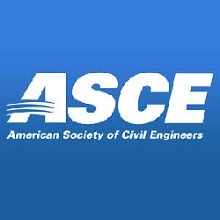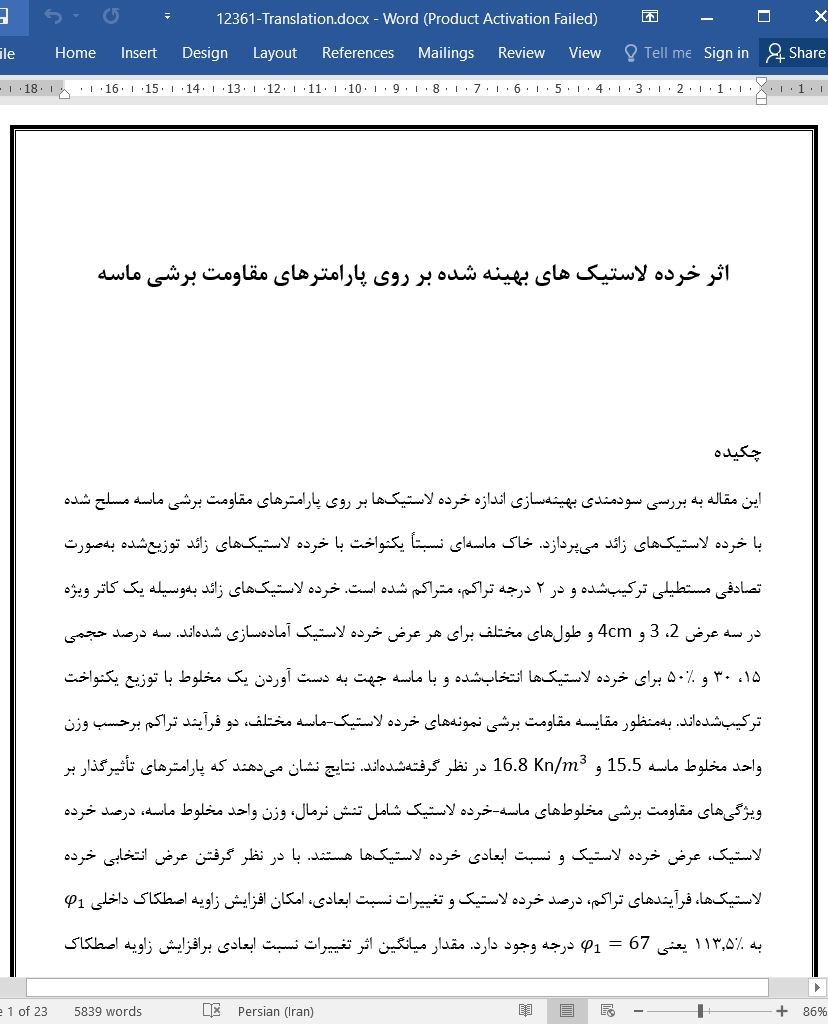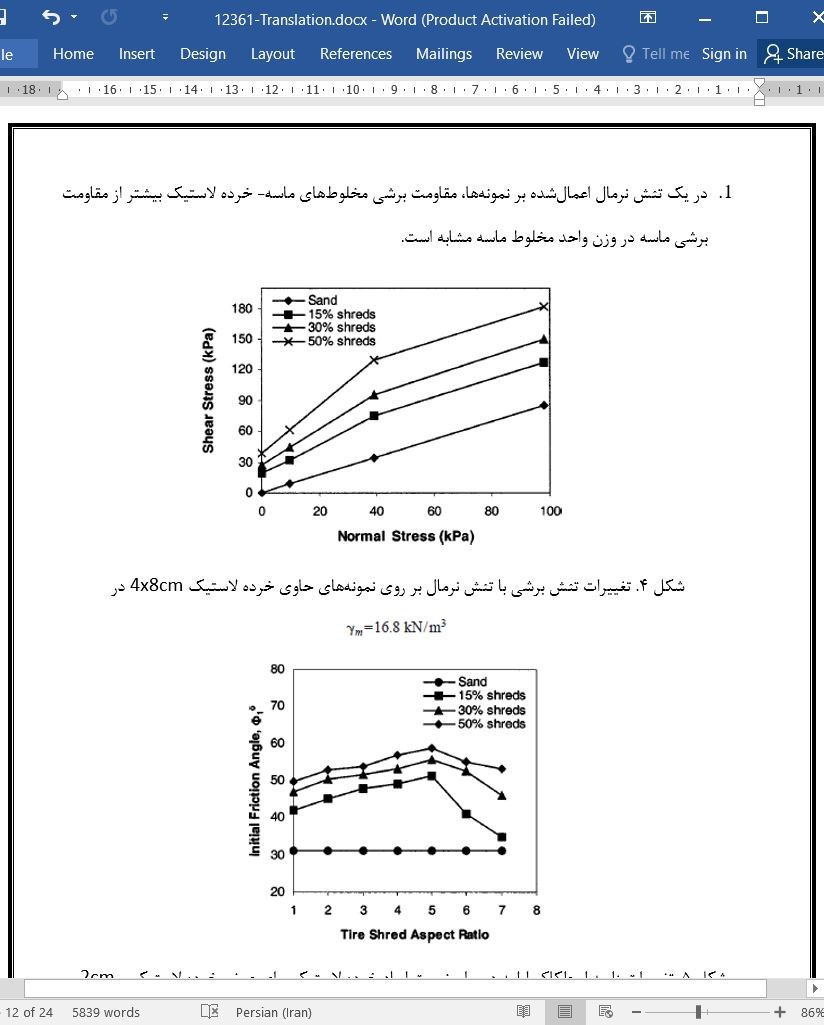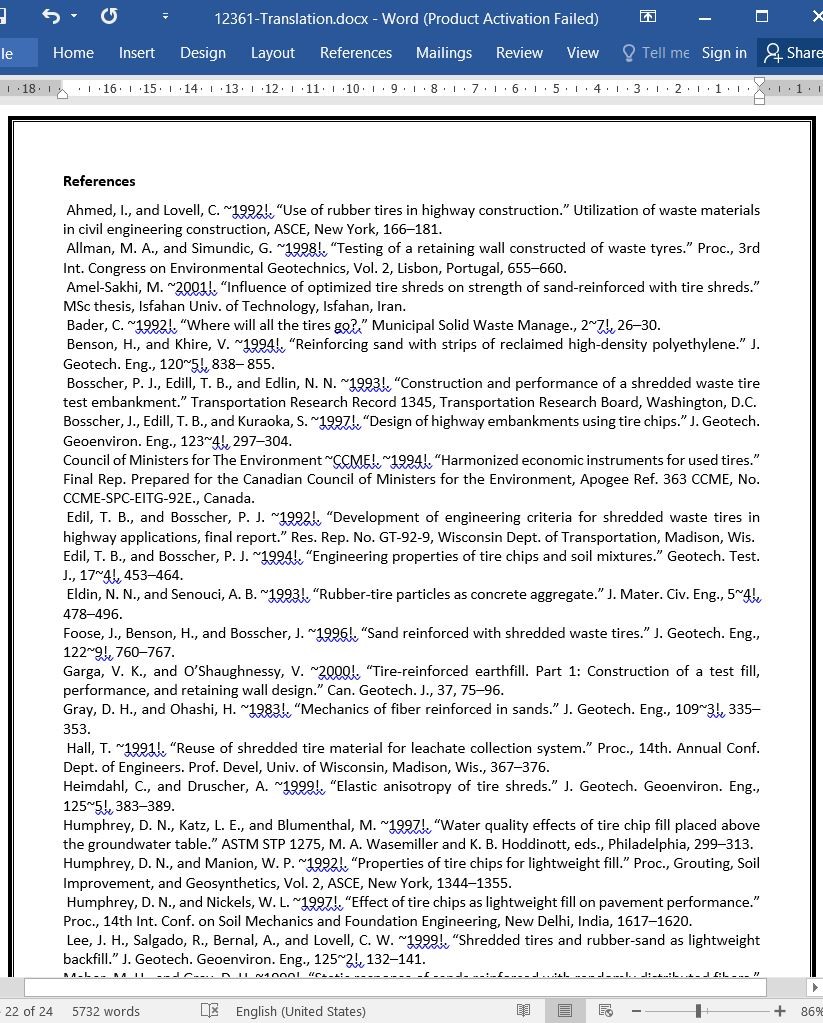
اثر خرده لاستیک های بهینه شده بر روی پارامترهای مقاومت برشی ماسه
چکیده
این مقاله به بررسی سودمندی بهینهسازی اندازه خرده لاستیکها بر روی پارامترهای مقاومت برشی ماسه مسلح شده با خرده لاستیکهای زائد میپردازد. خاک ماسهای نسبتاً یکنواخت با خرده لاستیکهای زائد توزیعشده بهصورت تصادفی مستطیلی ترکیبشده و در 2 درجه تراکم، متراکم شده است. خرده لاستیکهای زائد بهوسیله یک کاتر ویژه در سه عرض 2، 3 و 4cm و طولهای مختلف برای هر عرض خرده لاستیک آمادهسازی شدهاند. سه درصد حجمی 15، 30 و %50 برای خرده لاستیکها انتخابشده و با ماسه جهت به دست آوردن یک مخلوط با توزیع یکنواخت ترکیبشدهاند. بهمنظور مقایسه مقاومت برشی نمونههای خرده لاستیک-ماسه مختلف، دو فرآیند تراکم برحسب وزن واحد مخلوط ماسه 15.5 و 16.8 Kn/m^3 در نظر گرفتهشدهاند. نتایج نشان میدهند که پارامترهای تأثیرگذار بر ویژگیهای مقاومت برشی مخلوطهای ماسه-خرده لاستیک شامل تنش نرمال، وزن واحد مخلوط ماسه، درصد خرده لاستیک، عرض خرده لاستیک و نسبت ابعادی خرده لاستیکها هستند. با در نظر گرفتن عرض انتخابی خرده لاستیکها، فرآیندهای تراکم، درصد خرده لاستیک و تغییرات نسبت ابعادی، امکان افزایش زاویه اصطکاک داخلی φ_1 به %113.5 یعنی φ_1=67 درجه وجود دارد. مقدار میانگین اثر تغییرات نسبت ابعادی برافزایش زاویه اصطکاک مخلوطها برای کلیه آزمایشها به میزان %25 بوده است. این مقادیر میانگین برای نمونههای کمتر و بیشتر متراکم شده حاوی نسبتهای عرضی و ابعادی مختلف به ترتیب 37.6 و %17.2 بودهاند. بر اساس بررسیها برای یک عرض مشخص خرده لاستیکهای مستطیلی، یک طول مشخص وجود دارد که موجب ایجاد بیشترین زاویه اصطکاک اولیه برای مخلوطهای خرده لاستیک-ماسه میشود. این موضوع بهعنوان کارکرد اصلی این مقاله محسوب میشود.
مقدمه
با توسعه جوامع و استفاده از وسایل نقلیه مختلف، بسیاری از لاستیکهای زائدی که به محیطزیست وارد میشوند، موجب ایجاد مشکلات جدی میشوند. تعداد لاستیکهای زائد در آمریکا حدود 250 میلیون لاستیک است. در کانادا، این میزان حدود 28 میلیون لاستیک زائد است. تنها %30 از لاستیکهای زائد اشارهشده در بالا در خاکریزها ریخته میشوند (CCME 1994). این لاستیکهای زائد معمولاً در خاکریز ها قابل دپو شدن نیستند، زیرا آنها به فضای زیادی نیاز دارند. در بریتانیا، تعداد لاستیکهای زائد حدود 25 میلیون حلقه است. در بریتانیا، سهم لاستیکهای زائد در ایجاد برق حدود %20 از کل میزان سوخت است (نویسنده اول از اخبار تلویزیون محلی شنیده است).
نتیجهگیری
در این تحقیق، اثر ابعاد خرده لاستیکهای مستطیلی آمادهشده از لاستیکها زائد بر مقاومت برشی مخلوطهای ماسه- خرده لاستیک با انجام آزمایشات برش مستقیم بزرگ موردبررسی قرارگرفته است. مخلوطهای ماسهای و ماسه- خرده لاستیک دارای 15،30 و %50 خرده لاستیک به عرض 2، 3 و 4cm و نسبتهای ابعادی مختلف در دو سطح تراکم متفاوت مورد آزمایش قرار گرفتند. بر اساس نتایج مقدار خرده لاستیک،عرض خرده لاستیک، نسبت ابعادی خرده لاستیک برای یک عرض مشخص، تراکم و تنش نرمال بهعنوان عوامل تأثیرگذار بر مقاومت برشی مخلوطها محسوب میشوند. میتوان برخی از نتایج را مورد ارجاع قرارداد.
خصوصیات اتساع در مخلوطهای ماسه- خرده لاستیک بهویژه در نمونههای دارای درصد خرده لاستیک بیشتر و تراکم بیشتر مشاهدهشده است.
Abstract
This paper presents the usefulness of optimizing the size of waste tire shreds on shear strength parameters of sand reinforced with shredded waste tires. A relatively, uniform sand has been mixed with randomly distributed waste tire shreds with rectangular shape and compacted at 2° of compaction. Waste tire shreds were prepared with a special cutter in three widths of 2, 3, and 4 cm and various lengths for each shred width. Three shred contents of 15, 30, and 50% by volume were chosen and mixed with the sand to obtain a uniformly distributed mixture. In order to compare the shear strength of different sand–tire shred samples, two compaction efforts in terms of sand matrix unit weights of 15.5 and 16.8 kN/m3 were considered. The results show that the influencing parameters on shear strength characteristics of sand–shred mixtures are normal stress, sand matrix unit weight, shred content, shred width, and aspect ratio of tire shreds. With the selected widths of shreds, compaction efforts, shred contents, and the variations of aspect ratios, it is possible to increase the initial friction angle f1 up to 113.5%, that is f1=67°. The average value for the influence of aspect ratio variations on increase in friction angle of the mixtures for all tests has been found to be about 25%. These average values for lower and higher compacted samples containing different widths and aspect rations were 37.6 and 17.2%, respectively. It has been investigated that for a given width of tire rectangular shreds, there is solely a certain length, which gives the greatest initial friction angle for sand–tire shred mixtures. This is the main contribution of this paper.
Introduction
With the development of societies and use of various vehicles, many waste tires enter the environment, causing serious problems. The number of waste tires in the United States accounts for about 250 million. In Canada this figure is about 28 million. Only 30% of the above numerous waste tires are stocked in landfills ~CCME 1994!. Such wastes cannot generally be deposited in landfills since they require large spaces. In the United Kingdom, the number of waste tires is about 25 million. In the United Kingdom, the contribution of waste tires in producing electricity is estimated to be 20% of total fuel ~the first writer heard from local TV news!.
Conclusions
The influence of dimensions of rectangular shreds prepared from waste tires on the shear resistance of sand–shred mixtures has been investigated by performing large direct shear tests. Sand alone and sand–shred mixtures having 15, 30, and 50% shreds of 2, 3, and 4 cm width and various aspect ratios were tested at two different compaction levels. It has been found that shred contents, shred width, shred aspect ratio for a given width, compaction, and normal stress are influencing factors on shear strength of the mixtures. A number of findings can be cited.
Dilation characteristics were observed in sand–shred mixtures, especially in samples having greater shred content and more compaction.
چکیده
مقدمه
مواد
تجهیزات آزمایش برش مستقیم
آمادهسازی نمونه
نتایج
بحث
نتیجهگیری
منابع
Abstract
Introduction
Materials
Direct Shear Test Apparatus
Sample Preparation
Results
Discussion
Conclusions
References
- ترجمه فارسی مقاله با فرمت ورد (word) با قابلیت ویرایش، بدون آرم سایت ای ترجمه
- ترجمه فارسی مقاله با فرمت pdf، بدون آرم سایت ای ترجمه



